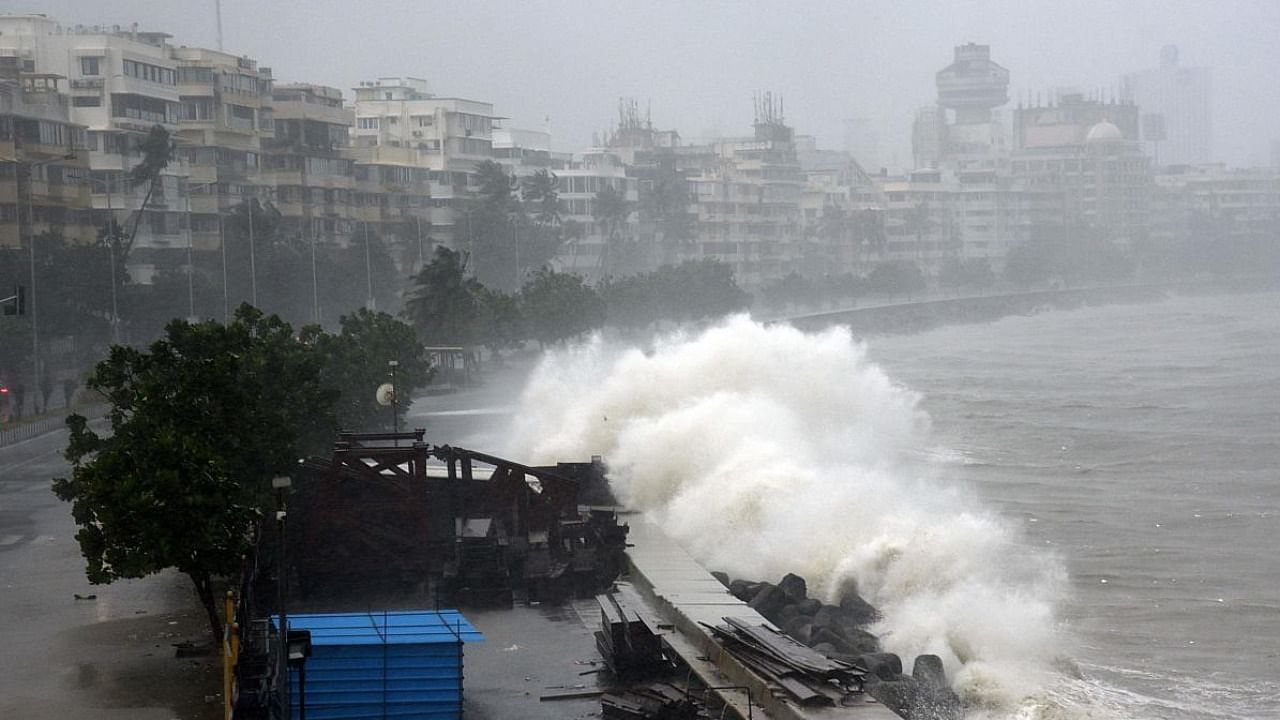
It wasn't long after cyclone Tauktae waned off India's west coast that a new cyclone, Yaas, gained strength on the other end of the country. Earlier in the week, following Yaas's landfall, the storm left trees uprooted, homes wrecked and fields inundated, mirroring the destruction that Tauktae inflicted on nearly all the western states last week.
While eastern states sit through cyclones annually, the particularly severe cyclone off the Arabian Sea ended up leaving hundreds dead and affecting lakhs of people on the coastlines. The increasing frequency and intensity of cyclones on the west coast are emblematic of greater concern, far more serious than east coast storms.
In the Arabian Sea, cyclones are said to be relatively uncommon. Tauktae, however, intensified rapidly -- something that IMD had not predicted. Climate change effects like warming seas make perfect wombs for destructive cyclones. And unpredictable, rapid changes in the sea mean the people on the land have less time to prepare.
While IMD records show that the Bay of Bengal has had more cyclones historically, the cyclones in the Arabian Sea are now increasingly frequent. In 2011-2020, there were 17 cyclones in the sea, the highest ever in a decade since the 1890s, according to Hindustan Times. Among these, the majority of them were severe cyclones.
Though the number of cyclones that parade through the east coast may be more, the Arabian Sea is birthing more intense cyclones. "This is because the warming over the Arabian Sea is higher than the Bay of Bengal," M Rajeevan, secretary, Ministry of Earth Sciences told the publication.
S. Abhilash, a scientist with the Department of Atmospheric Sciences at Cochin University of Science and Technology (CUSAT) told The Wire that while the Bay of Bengal is witnessing a decrease in the number of cyclones, the west coast is showing an upward trend.
“All tropical cyclones require large amounts of energy to remain alive. Normally, this energy is obtained from the warm water and humid air over the tropical seas. At present, seawater up to depths of 50 metres is hot in the Arabian Sea, and so the possibilities of more cyclones are in the cards,” he said.
Repercussions of climate change make the conditions over the sea favourable for a cyclone. Like it happened with Tauktae.
"Tauktae intensified very rapidly. We did not state that it would intensify to an extremely severe cyclone in our forecast. But it did because of extremely favourable oceanic and atmospheric conditions,” M Mohapatra, Director-General, Indian Meteorological Department told HT.
Apart from environmental factors, the western coast has also a high population density in some regions, putting more people at risk. In terms of infrastructure, the damage to the industries can impact the livelihoods of lakhs of people.
For instance, the capsizing of the ONGC barge due to the storm left over 80 dead in the Arabian Sea off Mumbai's coast. These offshore activities are livelihood for many but recurring cyclones make their jobs increasingly risky, and sometimes even fatal.
In states like Kerala, man-made changes are aggravating the damage of cyclones. Tauktae, which made landfall in Gujarat, only shaved past the coast of the southern state but ended up causing havoc in various coastal districts.